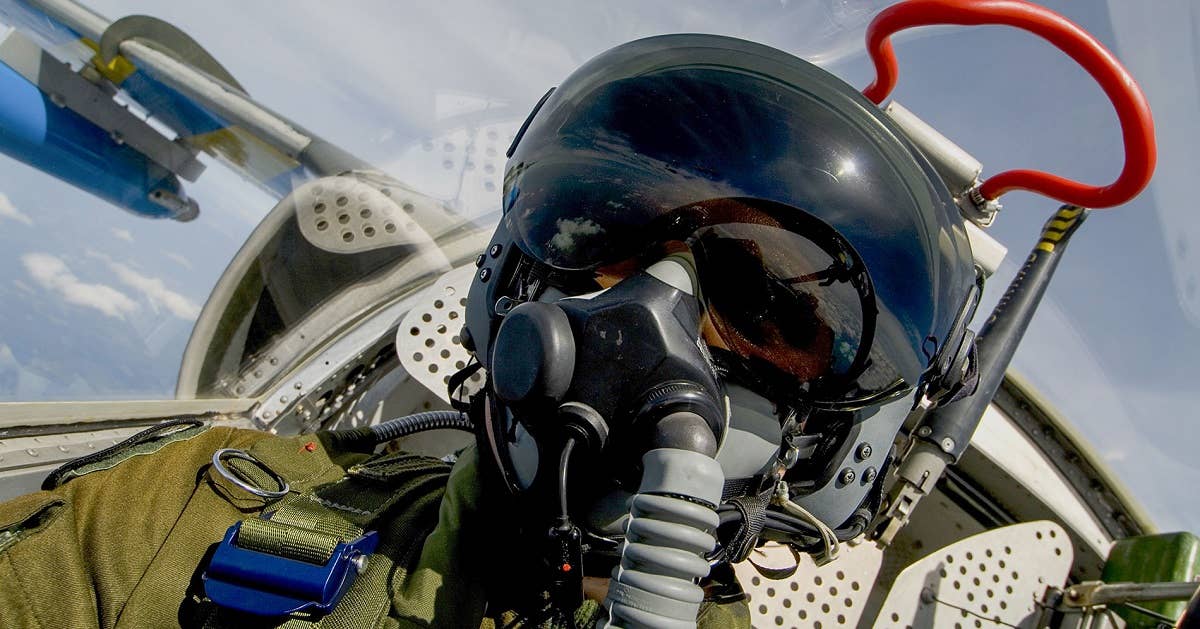
Earlier this year, both the Air Force and Navy were forced to ground planes due to pilots reporting hypoxia-like symptoms. Among the planes that have had pilots experience hypoxia include the F-35 this past June and the T-45 in April.

It goes without saying that hypoxia is a big deal for pilots. To put it simply, hypoxia is a fancy term for someone is not getting enough oxygen. This tends to happen at high altitudes where the atmosphere is thinner. Not getting enough oxygen leads to unconsciousness, brain damage, and if you’re really unlucky, death.
However, Cobham Mission Systems has been working to address the hypoxia epidemic, through the development of new breathing sensors. These sensors can be incorporated into the life-support systems of any tactical jet.

According to a handout obtained from Cobham’s booth at the AirSpaceCyber expo in National Harbor, Maryland, the new sensors are battery-powered and can collect data for up to 10 hours for analysis after the flight, or they can display the data in real time. These sensors are intended to be used as part of a new life-support system that will prevent hypoxia.
The first sensor, the Inhalation Breathing Sensor, monitors oxygen pressure, the gas flow, the temperature of the gas, the pressure in the hose, the humidity of the gas, the pressure in the cockpit, the cabin temperature, and three-axis acceleration.

The other sensor, the Exhalation Breathing sensor, also monitors oxygen pressure and three-axis acceleration. However, it also notes the pressure, temperature, and humidity of the exhaled gas. It also measures the carbon dioxide and the pressure inside the mask.
Cobham is working to mate these sensors with a warning system to alert the pilot and allow him to take measures to correct the situation. The data gathered will also be used to determine the root cause of why a pilot suffers hypoxia.
